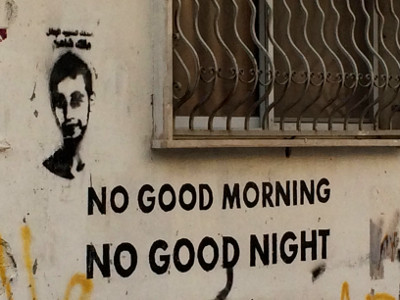The military occupation of what is called “the West Bank” (from a Jordanian perspective) continues. The move of the US Embassy from Tel Aviv to Jerusalem was implemented in May on the day commemorating the Nakba. The siege, blockade, and “de-development” of Gaza continues apace, as does the IDF (Israel Defense Forces) killings of Gazans and internationals engaging in popular nonviolent resistance, including participation in the Great March of Return which started on Palestinian Land Day March 30. Palestinian citizens of Israel continue to be treated as second class citizens in their own land, and this summer their lack of rights and exclusion in supposedly “the only democracy in the Middle East” has been confirmed through the passage of the Nation-State Bill by the Israeli Knesset. Over 7 million Palestinian refugees still cannot return to their family lands, their homes, or their country. The Palestinian Nakba (“catastrophe”) of 1948 goes on to the present day.
Last year I lived in Ramallah in “the West Bank,” teaching and doing research at Birzeit University on a Fulbright fellowship. I traveled extensively in both Palestine and Israel. Trips to Jerusalem and to Israel required a trip through the Qalandia Checkpoint, which meant interacting with 18-year-old IDF soldiers with assault weapons, and the requisite showing of identity papers and travel permits by Palestinians and passports by internationals. Although only 12 miles down the road, the trip to Jerusalem could take anywhere from 1 to 2.5 hours. The checkpoints restrict movement, make it nearly impossible for Palestinians to be consistently punctual at their workplaces or agricultural fields, or anywhere else. Checkpoints are a constant source of power displays for Israeli soldiers, humiliation for Palestinians, and a reminder of military occupation.
The 70-year oppression of Palestinians continued in 2017-18, as do the fears and sense of injustice of many Israeli Jews. I asked many Palestinians in West Bank, and both Arab and leftist Jewish Israelis, what they thought I should do as a US citizen to help end the Nakba. The vast majority responded with the same idea: First they thanked me for coming and witnessing the occupation (usually expressed as “You are welcome in Palestine!”). Then they said, “Go home and talk to other US citizens about what you have seen and experienced here. Most importantly, talk to your political leaders. This occupation couldn’t last for a week without your taxpayer dollars funding it.”
While staying in Bethlehem with three Peace Council friends, we visited the family of Ahmed Hmeedat, a Palestinian law student and artist we knew from Syracuse University. Ahmed grew up in Dheisheh refugee camp, where during the Second Intifada he experienced months-long curfews as a young teen. He and his friends found a coping mechanism and potent expression through art. Ahmed gave a presentation of some of his murals and artwork at Dheisheh for the Palestinian Land Day event at ArtRage in 2016. The four of us from Syracuse had Arabic coffee and cake with Ahmed’s mother, brother, sister, and cousin Omar, who all live there, and toured the camp with its murals and graffiti. “No Good Morning, No Good Night” appeared on a wall in a narrow street of the camp, next to many paintings of those young men from the camp called “martyrs” because they were killed by Israeli soldiers. Along with depictions of martyrs and commentary like “No Good Morning, No Good Night,” walls are filled with the familiar cartoon character Handala, created by Palestinian artist Naji Al-Ali. Handala is the beloved child character who always appears with his back to us and his hands clasped together.
Now we have all returned to Syracuse and are trying to follow the advice of those Palestinians and progressive Israelis who we met. We are talking to many people here in the US about our experiences in Palestine. Along with growing numbers of people in the US, we put pressure on our own government to stop funding and otherwise supporting the military occupation and oppression of Palestinians. The Justice for Palestine Committee is holding vigils on the first and third Thursdays of the month to protest the violent response of the Israeli military to the peaceful demonstrators of the Great March of Return at the Gaza border. Soon after I returned in late June, eyewitness reports came of IDF soldiers killing a 15-year-old boy when they raided Dheisheh camp (see https://mondoweiss.net/2018/07/tale–two–rehearsals/). The likelihood of the soldiers being held accountable for the boy’s death is very small. Ahed Tamimi, another Palestinian teenager, was jailed in December 2017 for slapping an IDF soldier who tried to invade her house, after her cousin had been shot and gravely wounded. She was finally released after nearly 8 months and much international outcry. Support from transnational activists and media attention does make a difference for Palestinians struggling to end the Nakba. US citizens especially should put pressure on our government in raising our voices and using tax resistance: “Not in our name and not with our money.”
Julia is a sociologist and an activist in CNYand spent last year as a Fulbright Scholar in Occupied Palestine, bearing witness to the occupation and writing about Palestinian popular resistance.






